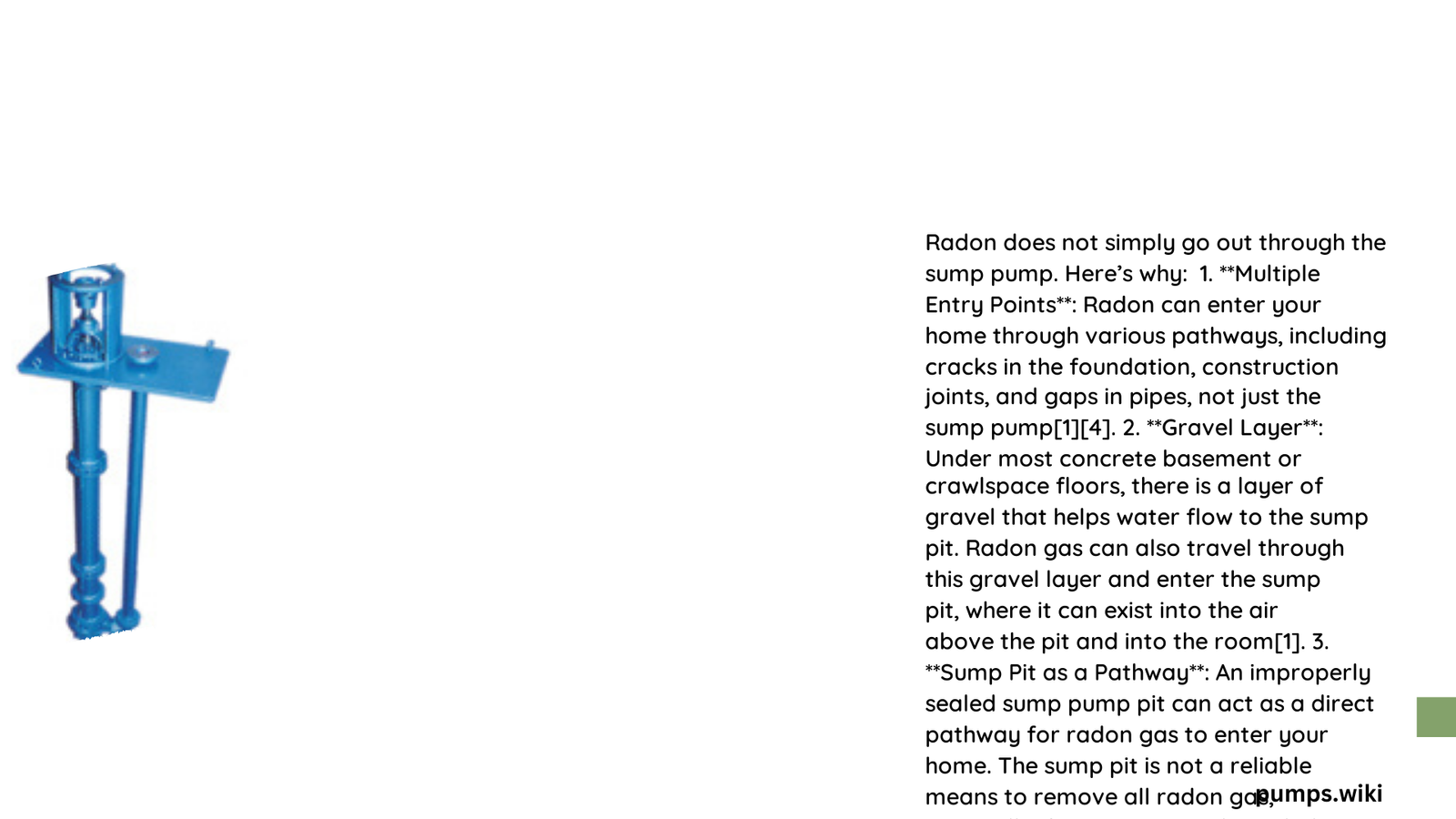Radon gas presents a complex challenge for homeowners, particularly those with sump pump systems. Contrary to popular belief, radon doesn’t automatically escape through sump pumps. Instead, these systems can actually serve as potential entry points for radioactive gas, requiring strategic mitigation approaches to protect indoor air quality and prevent potential health risks associated with long-term radon exposure.
What Makes Radon Enter Through Sump Pump Systems?
Radon gas emerges from uranium decay in soil, creating multiple pathways into residential spaces. Sump pump systems, designed for water management, inadvertently become potential conduits for radon transmission.
Key Mechanisms of Radon Entry
| Entry Mechanism | Description | Risk Level |
|---|---|---|
| Drain Tile Pathways | Perforated pipes allowing soil gas migration | High |
| Foundation Cracks | Microscopic openings around sump pit | Medium-High |
| Gravel Bed Transmission | Loose soil material facilitating gas movement | Medium |
Why Doesnt Radon Just Go Out the Sump Pump?
Radon doesn’t automatically exit through sump pumps due to several critical factors:
- Pressure Dynamics
- Soil gas pressure differs from indoor air pressure
- Radon tends to accumulate rather than naturally ventilate
-
Requires active mitigation strategies
-
Structural Limitations
- Sump pit covers are often not completely airtight
- Gaps and unsealed areas create continuous entry points
- Standard sump pump designs lack inherent radon prevention mechanisms
Effective Radon Mitigation Strategies
Homeowners can implement multiple approaches to reduce radon risks:
- Install specialized radon-resistant sump pit covers
- Implement sub-slab depressurization systems
- Use continuous monitoring devices
- Seal foundation cracks and potential entry points
- Consult professional radon mitigation specialists
How Can Homeowners Protect Against Radon?

Professional assessment remains the most reliable method for understanding and mitigating radon risks. Certified radon technicians can:
- Conduct comprehensive home testing
- Design customized mitigation solutions
- Recommend specific interventions based on individual home characteristics
Potential Radon Reduction Techniques
- Active Soil Depressurization
- Sealed Sump Pit Installations
- Enhanced Ventilation Systems
- Specialized Radon Extraction Fans
Cost Considerations
Radon mitigation investments typically range between $800-$2,500, depending on home complexity and chosen intervention strategies. While seemingly expensive, these measures provide critical long-term health protection.
What Happens If Radon Mitigation Is Ignored?
Unaddressed radon exposure can lead to significant health risks:
– Increased lung cancer probability
– Potential respiratory complications
– Long-term cellular damage
– Elevated health care expenses
Statistical Insight
- EPA estimates 21,000 lung cancer deaths annually from radon exposure
- Approximately 1 in 15 homes have elevated radon levels
- Basement and ground-level spaces face highest contamination risks
Technical Recommendations
- Conduct biennial professional radon testing
- Maintain sump pump systems regularly
- Use continuous electronic radon monitors
- Implement multi-layer mitigation strategies
Final Thoughts on Radon and Sump Pump Systems
Radon management requires proactive, comprehensive approaches. Sump pumps alone cannot guarantee gas elimination, necessitating specialized interventions and professional guidance.
Reference:
– EPA Radon Information
– CDC Radon Health Risks
– National Radon Safety Board
